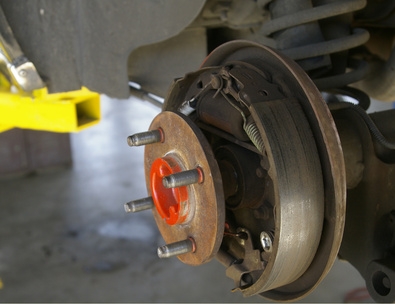
The website Brake Equip compares brake hoses to human arteries. Just as physicians perform a stress test on humans to help assess their condition, mechanics will test brake hoses with pressure applied---stressing them, in a sense. This test usually requires two people: one to check the hoses and another to apply pressure to the hoses by depressing the brake pedal from the driver's seat. If you check your own brake hoses, keep a new one handy for comparison.
Mechanics will recommend feeling brake hoses to find out whether they feel either excessively hard and stiff or soft and weak. In either case, the brake hoses will likely need replacing. Have an assistant depress the brake pedal while sitting in the driver's seat. If the hoses expand noticeably, they are likely faulty as well.
Common visible signs of faulty brake hoses include cracks, particularly near the ends, or twisting along the hoses. Areas that expand, forming a bubble when you depress the brake pedal, also indicate problems. You may also be able to see the brake hoses expand too greatly under pressure. Look for signs of wear, such as a worn spot at a point along the hose---sometimes referred to as "chafing." Inspect the ends of the hoses as well, checking for leaks.
All of your brake hoses will usually wear down at about the same rate because brake pressure occurs fairly evenly with use. Signs of wear on the outside of the hoses will often indicate deterioration on the insides as well. As a general rule of thumb, replace all of your hoses at the same time when you find one faulty hose. This way, they will again wear away at the same rate from the same point.